Etrurio Olive Oil, Maremma
- Mike
- Feb 14, 2022
- 3 min read
Updated: Apr 18, 2024
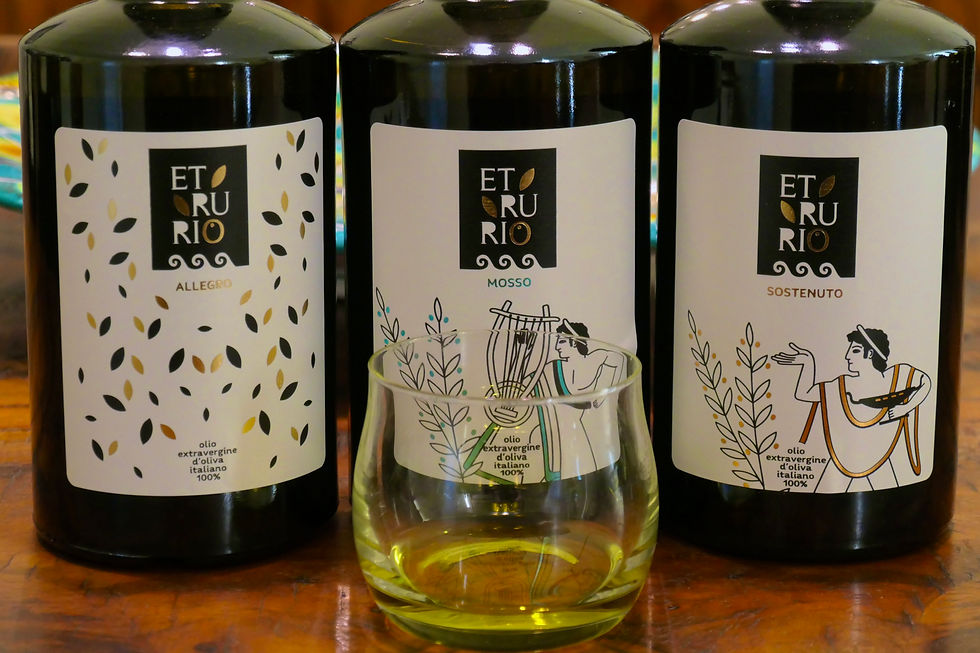
In 2015 Andrea Sozzi Sabatini created the Etrurio olive oil brand with his purchase of 115 acres in Civitella Marittima, midway between Siena and Grosseto in the heart of the Maremma. Here, in the Ombrone river valley at 1,000 feet of elevation he planted 13 different olive cultivars on his new Poggio La Pia estate.
Two of the cultivars he planted, Arbequina and Koroneiki, are early fruiting varieties which allowed his first batch of extra virgin olive oil to be made at the end of 2017. Koroneiki is the primary variety grown in Greece for oil production and Arbequina, a Spanish olive, is commonly used with newer agricultural methods for high-density planting for olive orchards. The remaining 11 cultivars planted here are a mixture of traditional and new varieties.

Poggio La Pia was not Andrea’s first foray into olive oil however because his father trained as an agronomist in the 1960s and purchased the Poggio Rosso estate near Gavorrano in 1973, where today there are 16 acres producing olive oil from more typical Maremma cultivars. This is a part of the Maremma that we know well and of course the La Pia name for the new estate is taken from Dante's reference to the unfortunate woman in his 5th Canto of Purgatory, represented in the painting above a door in Gavorrano.
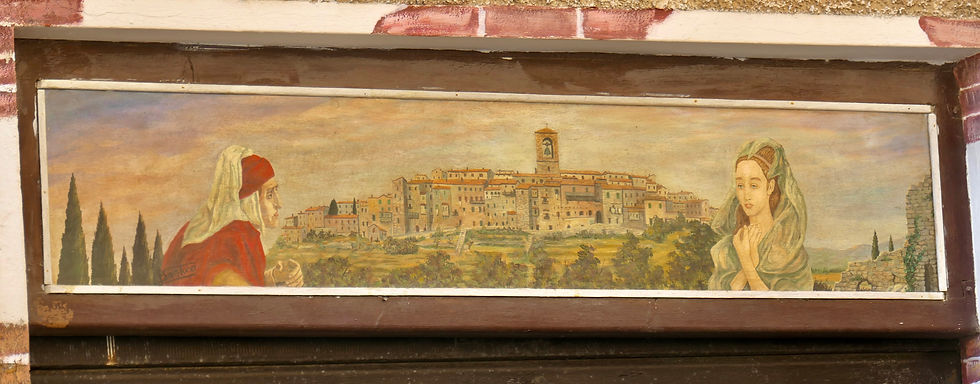
The Etrurio extra virgin olive oil blends have a different flavor profile to most Tuscan oils and quickly found favor with international consumers, evidenced by the amount of awards they have won at prestigious international olive oil contests. All 3 of the oils in our tasting notes below won Gold Awards in Japan in 2021 and the Sostenuto won an additional Gold Award at the 2021 New York International Olive Oil Competition for the second year in a row, following in the footsteps of Mosso in 2019 and Allegro in 2018.
Tasting Notes:
Allegro (blend of Arbequina, Koroneiki, Lecciana)
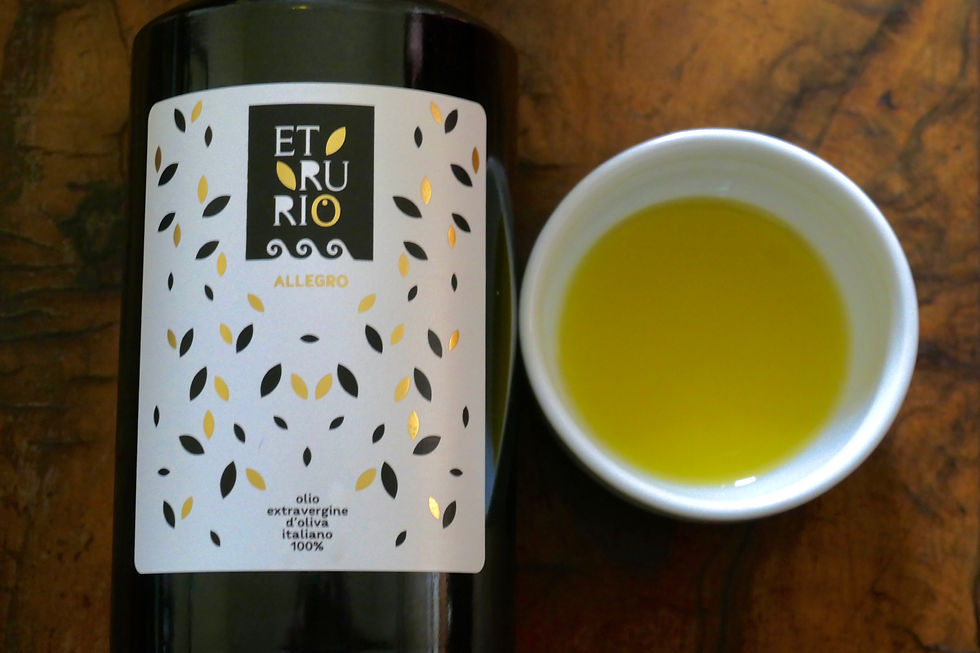
On the nose there's an aroma of green grass after a rain shower and on the palate this is a delicate oil showing notes of celery leaf and iceberg lettuce.
Nevertheless it has a long, persistent finish with Mediterranean pine nuts being the distinctive aspect instead of the sharp bite typical of many Tuscan olive oils. Allegro is an unusual oil that is very versatile and complements rather than competes with the food on your plate.
Mosso (blend of Sikitita, Koroneiki)
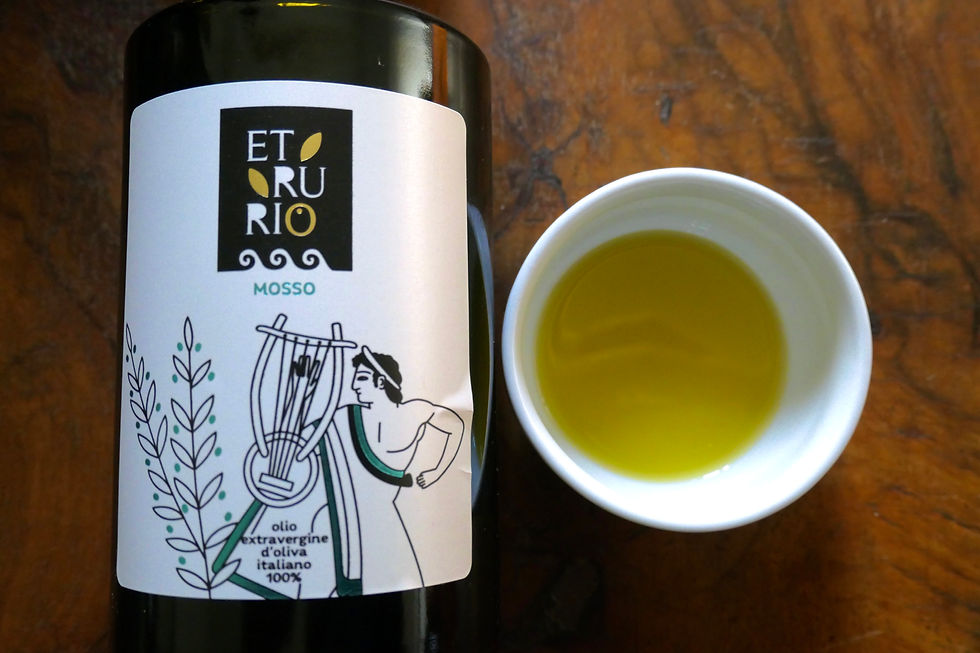
In contrast to the Allegro, the aroma of the Mosso blend is reminiscent of hay in a hot summer rather than green grass and this continues onto the palate with dried herbs being the dominant characteristic.
Distinctive notes of citrus and ripe tomato leaves are also present. There is a light peppery bite on the finish which adds some personality to the oil and distinguishes it nicely from the Allegro. The Mosso oil is a perfect blend for enhancing the flavor of pasta dishes in particular.
Sostenuto (blend of Maurino, Koroneiki, Rossellino)
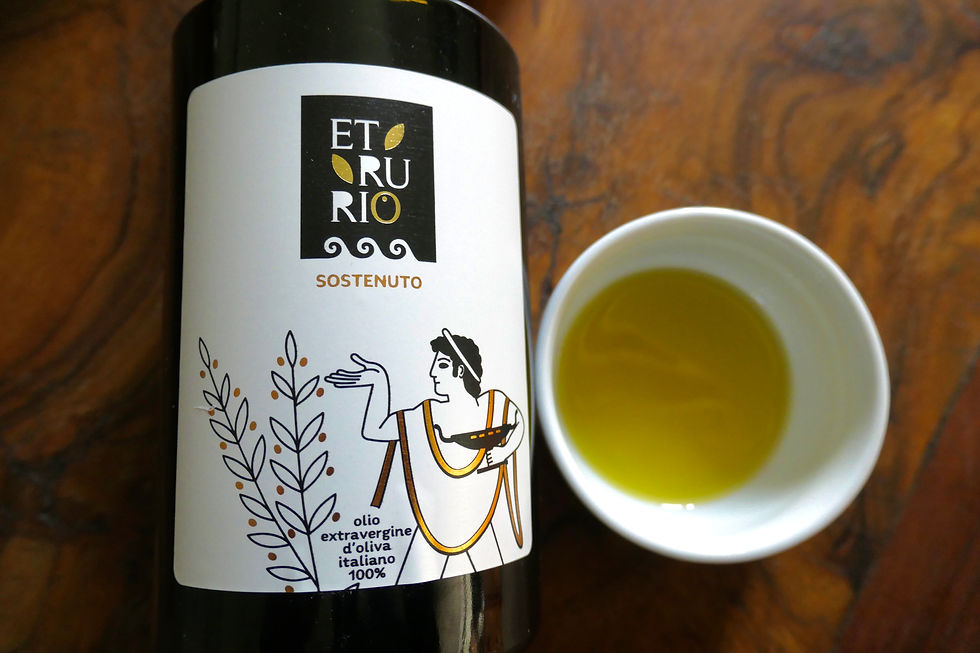
The Sostenuto blend is again quite different with notes of radicchio (a type of chicory), walnuts and Mediterranean herbs, particularly rosemary and bay leaf with a suggestion also of juniper.
This oil is texturally more viscous than the others with a noticeable peppery bite on the finish which is in keeping with the slightly bitter characteristics of the flavor profile. Perhaps my favorite of the three olive oils though Elena leans more towards the Allegro for its subtlety.
On the La Pia estate Andrea has also planted an experimental crop of pistachios to help identify which variety would best fit the central Maremma climate. Having spent years cycling past pistachio farms on Highway 33 in Central California I see many similarities between the climate of the Maremma and that of Kern County but the likelihood of winter frosts is significantly greater in the Maremma while the summer heat is much less than the blast furnace summers around Bakersfield. It's an interesting idea however.